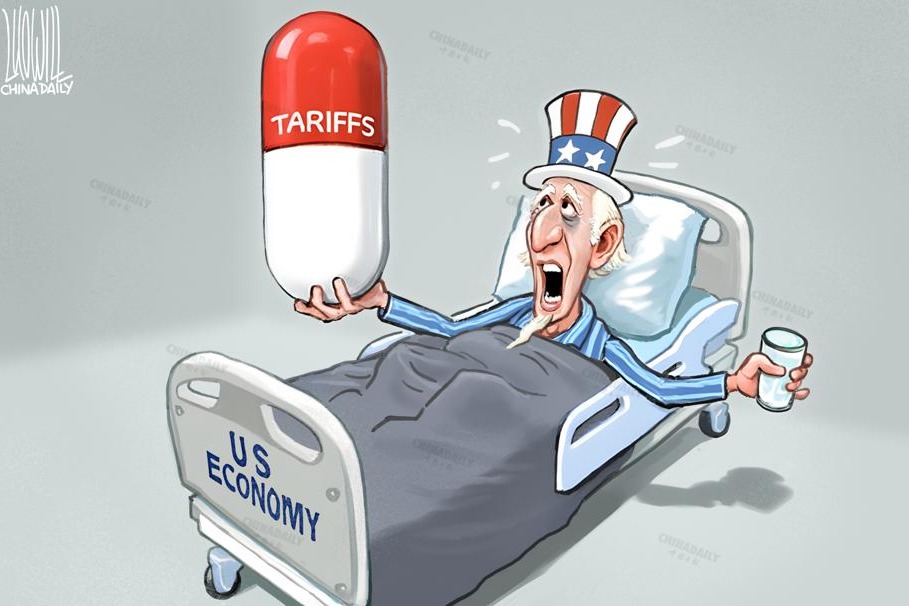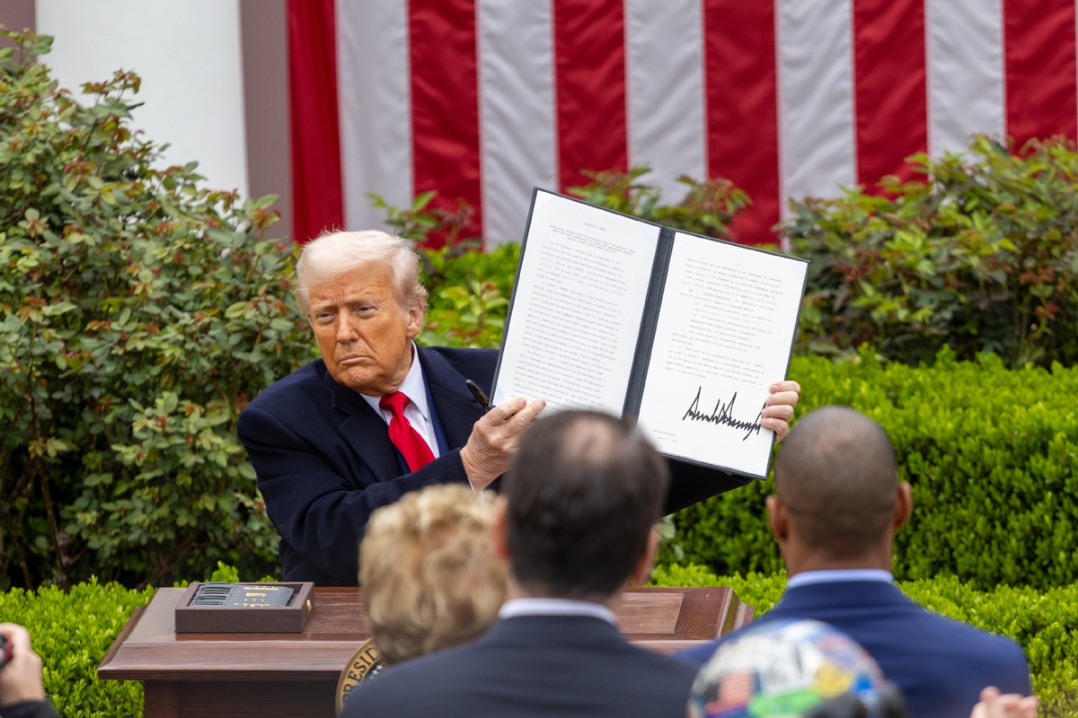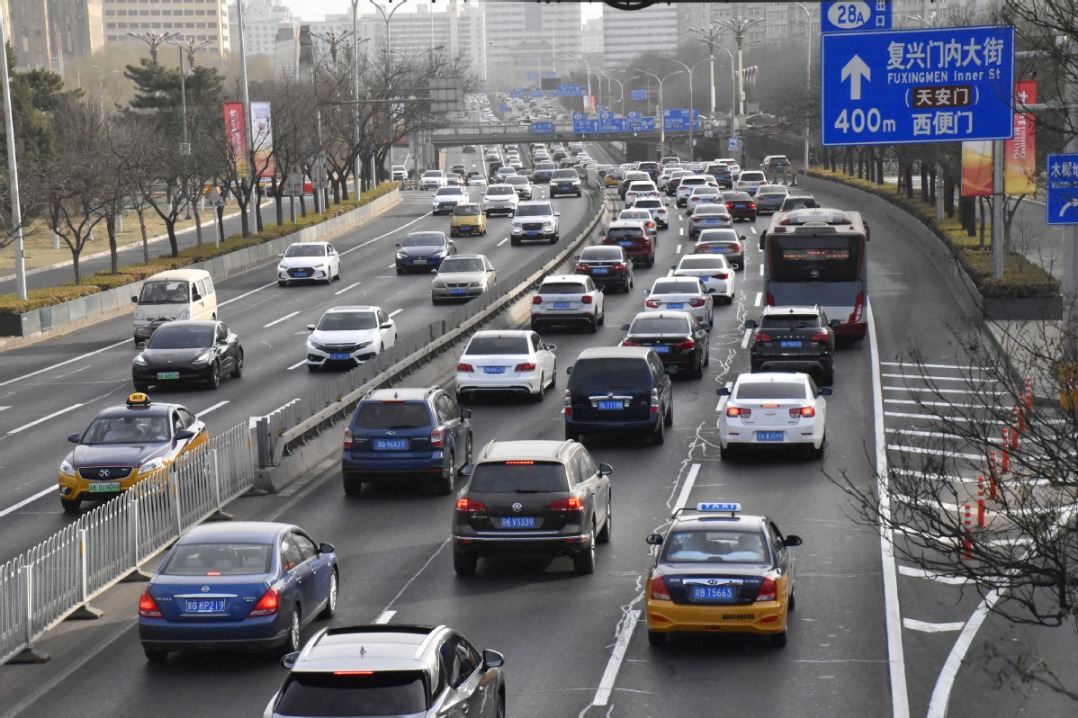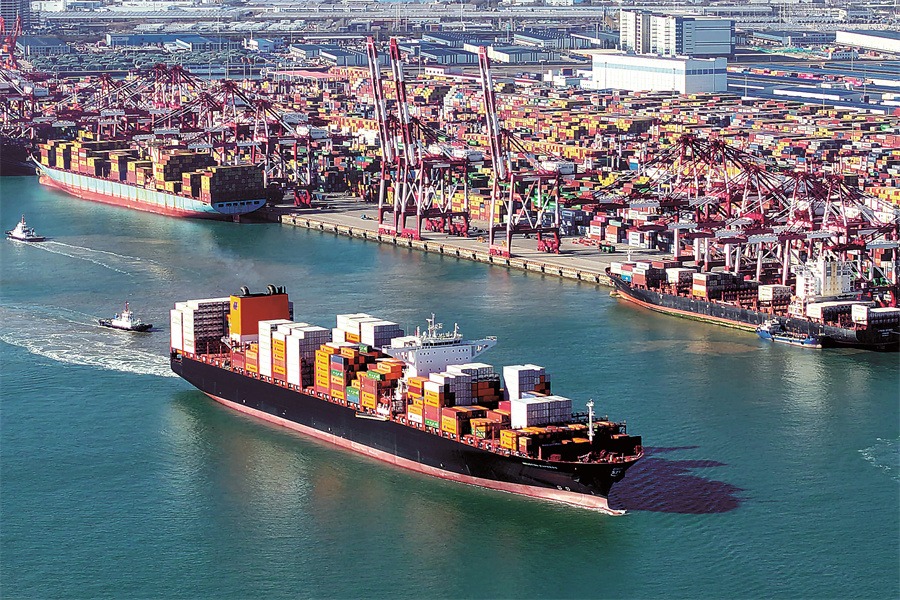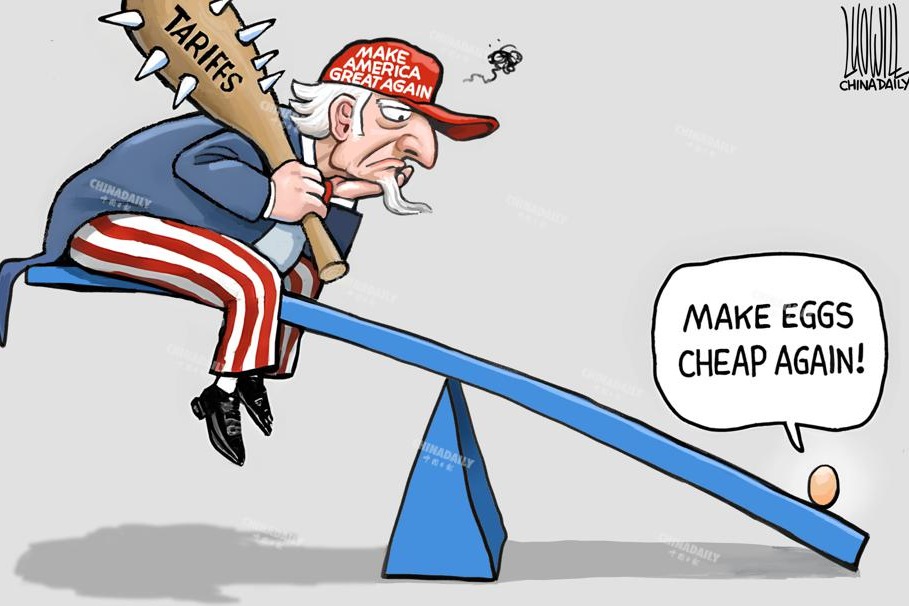Fly in the face of reality


US threat of higher tariffs on imports from Canada, China and Mexico is indicative of Washington's blinkered vision
Throughout the year 2024, the Joe Biden administration has threatened to impose new tariffs on Mexico, particularly on imported electric vehicles produced in Mexico by Chinese companies. President-elect Donald Trump has ramped this up by threatening the imposition of a 60 percent tariff on Chinese goods and a 25 percent tariff on imports from Mexico and Canada. Mexico, Canada and China were the main trading partners of the United States in 2023, together accounting for about 43 percent of US imports that year.
What is behind these threats?
First, the profound and increasing strategic distrust of China in the US. The slogan of "Make America Great Again" was popularized during Trump's presidential campaign in 2016, and the security-shoring process since 2022 reflect the continuation of strategies against China. The competition between the two largest economies is at the heart of the current confrontation, and particularly evident in the field of innovation and global technology chains.
Second, the US was the architect of the so-called Bretton Woods institutions established at the end of World War II, and was particularly interested in the liberalization of goods, services and capital. Institutions such as General Agreement on Tariffs and Trade, and its successor, the World Trade Organization in 1995, were functional to the fall of global tariffs. The US' tariffs on total imports fell continuously from 3.3 percent in 1990 to 1.23 percent in 2008, but they have increased since then, to 1.41 percent in 2017 and 2.35 percent in 2023.
Third, the US' tariffs differ by country. In 2023, China paid 10.4 percent, Canada 0.09 percent and Mexico 0.26 percent. That is, Trump's aforementioned threats account for tariffs six times higher for China, around 280 times higher for Canada and about 95 times higher for Mexico.
Fourth, as a result of China's increasing economic global presence, becoming the major exporter in 2017, China has become Latin America's second-largest source of imports since 2009, after the US. For several countries such as Argentina, Brazil, Chile and Peru, China is already the main source of imports.
Fifth, in countries such as Mexico, the recent trade relationship with the US and China reflects a "new triangular relationship", that is, it is not a matter of the US or China, but rather a discussion on China and the US. The Organization for Economic Cooperation and Development and its input-output tables reflect that Mexican gross exports to the US have increased significantly their Chinese value-added parts, from levels below 1 percent prior to 2001 up to 7.5 percent in 2020.
Nevertheless, the most important foreign source of Mexican exports is still the US. It is US companies established in Mexico that have been integrating, through imports, Chinese parts and components throughout the 21st century, acknowledging important benefits of Chinese technological upgrading in costs and in-time delivery. They are the main sources of the significant growth of Chinese value-added parts in Mexican exports to the US, and would also be the main affected companies in Mexico if the threatened tariffs are imposed in 2025. Another example is relevant: in 2023, cars fabricated in China accounted for 20 percent of new internal combustion engine car sales in Mexico, with levels below 1 percent just five years ago. Currently, most of the vehicles imported from China come from Western brands that have established manufacturing plants in Mexico, such as General Motors, Ford and Chrysler.
These results reflect that the political discussion in Washington does not sufficiently understand the profound new trade flows and integration between the US, China and Latin America, specifically in the case of Mexico. These processes have taken several decades and thousands of production lines and enterprises in these countries and will not be easy to substitute, in the best of the cases they will take several years and will be expensive for companies and consumers.
From a global perspective, however, the impacts will be much more severe and they could irreversibly damage the basis for current global trade flows, based on the most-favored-nation (MFN) clause of the GATT and the WTO, which requires countries to provide the same trading terms to all partners. The imposition of unilateral tariffs by the US — and possible countermeasures by China, Canada and Mexico — will lead to new discriminatory and unilateral principles such as those employed before World War I, increase consumer prices and weaken these global institutions, as well as the US-Mexico-Canada Agreement (USMCA) signed in 2020 under the Trump administration. USMCA specifically integrates cases such as the ones discussed above — those that account for a regional value-added or not — but under significantly lower tariffs compared to those now being proposed by Trump. A review of USMCA might leave little left to be negotiated in 2026.
The new Trump administration will hopefully reconsider its political arguments in light of the existing industrial relationships between Canada, China, Mexico and the US, and the interconnections globally. In addition, in China, Canada and Mexico, public officials should strengthen these arguments considering their important productive integration since the early 21st century.
The author is a professor at the National Autonomous University of Mexico and coordinator of the university's Center for Chinese-Mexican Studies. The author contributed this article to China Watch, a think tank powered by China Daily. The views don't necessarily reflect those of China Daily.
Contact the editor at editor@chinawatch.cn.






















